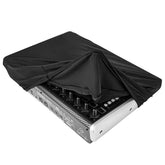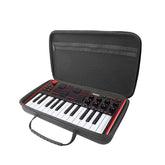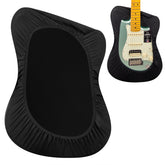The Unique Charm of Classical and Popular Instruments
In the world of music, classical and popular instruments each possess their own unique allure, attracting different types of musicians and listeners. From the perspective of a professional musician, these instruments not only differ in tone, technique, and historical background, but also in their ways of expression and emotional communication, showcasing distinct artistic values.
1. Tone and Expressiveness
Classical instruments, such as the violin, cello, and piano, boast a long history and intricate craftsmanship, providing a rich variety of tonal nuances and expressiveness. These instruments are often used to convey profound emotions, offering delicate emotional depth across a broad range of pitches. For instance, when performing works by Bach or Beethoven, classical instruments can evoke deep resonance in the listener's heart through precise notes and dynamic shifts.
In contrast, popular instruments like the electric guitar, electronic keyboard, and drum machine emphasize direct emotional expression and more modern sound effects. Their tones are often more impactful, better suited for conveying the rhythm and energy of popular music. Especially in rock, electronic, and pop genres, popular instruments, with the help of various effect pedals and amplifiers, can elevate modern music to new auditory heights.
2. Technique and Style
Playing classical instruments typically requires years of solid foundational training, emphasizing precise techniques and a deep understanding of the composition. For example, mastering the cello involves learning complex bowing techniques and finger positioning, requiring years of practice to accurately convey the composer’s intent. Popular instruments, on the other hand, are often more flexible and improvisational. A guitarist can quickly learn through simple chord progressions and develop their personal style freely. In popular music, improvisation and creativity are often more valued than strict technical rigor.
3. Cultural and Historical Background
Classical instruments carry centuries of musical tradition, representing the cultural essence of a specific era. Whether it’s the organ from the Baroque period or the piano from the Romantic era, each classical instrument bears a unique cultural imprint. Popular instruments, however, are more closely tied to modern life, often reflecting contemporary culture and societal trends. The electric guitar, as a symbol of the 20th century, not only represents rock culture but also witnessed the rise and fall of multiple musical waves.
4. Emotional Resonance with Listeners
Classical performances often require listeners to have a certain level of musical literacy to appreciate complex harmonic structures and the deep emotional layers of the music. Popular instruments, on the other hand, tend to quickly grab the listener's attention, providing an immediate emotional payoff. With their strong rhythm and simple, catchy melodies, popular music transcends age and cultural boundaries, resonating with a broader audience.
5. Innovation vs. Tradition
While classical instruments still play an important role in modern music creation, they are often presented in ways that preserve tradition. Popular instruments, however, are always at the forefront of technological innovation. With the development of technology, electronic instruments and software synthesizers continually evolve, offering musicians endless creative possibilities.
Whether it’s the historical weight of classical instruments or the modern innovation of popular instruments, both have their own unique appeal, drawing in different types of music lovers. The combination of both continues to push the diversity and evolution of music.







